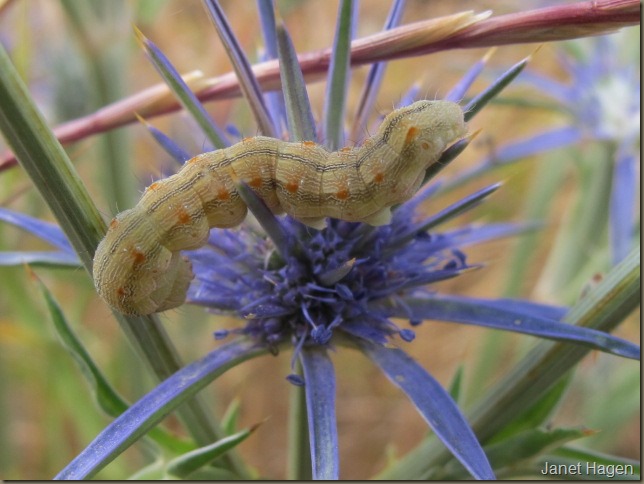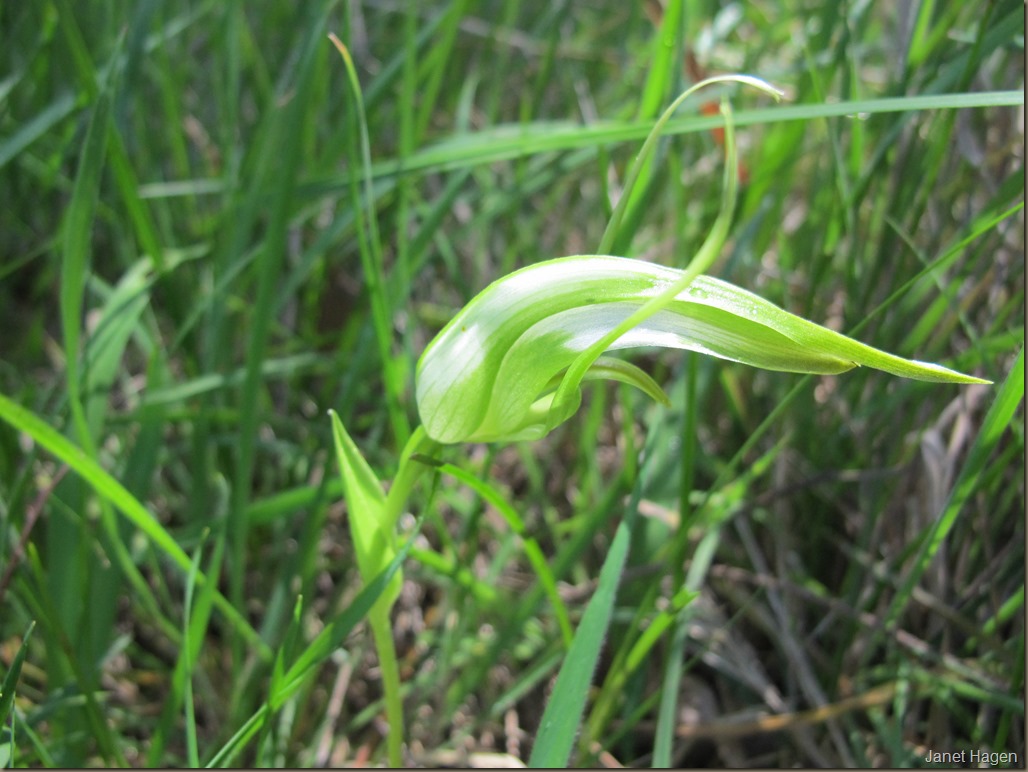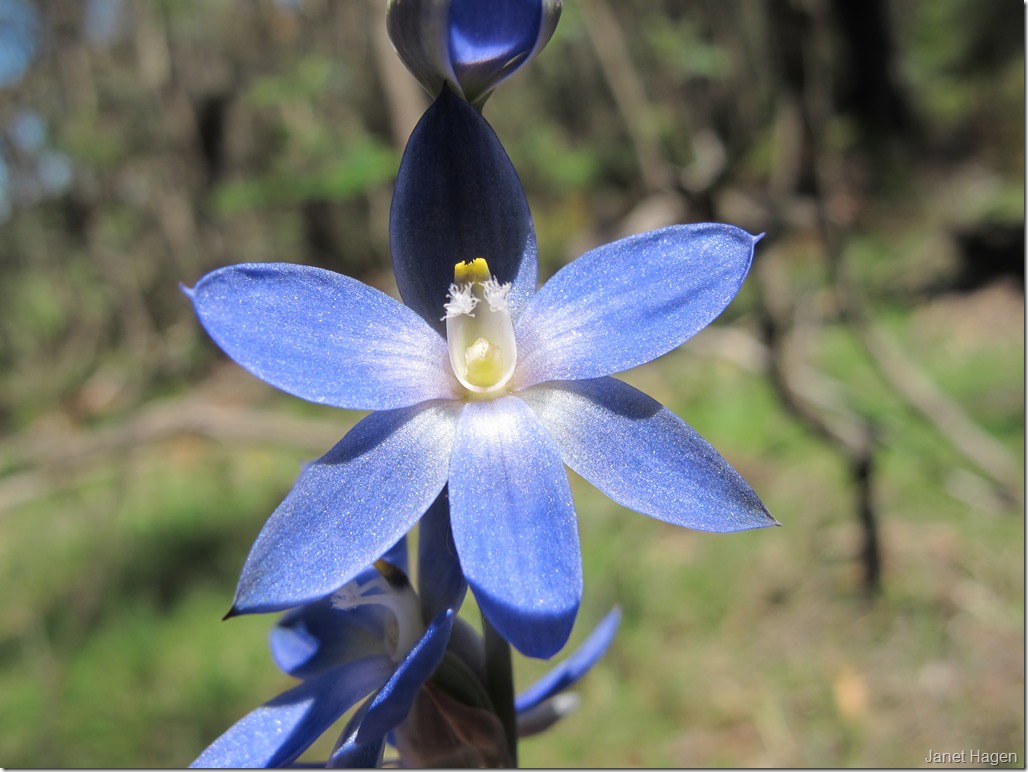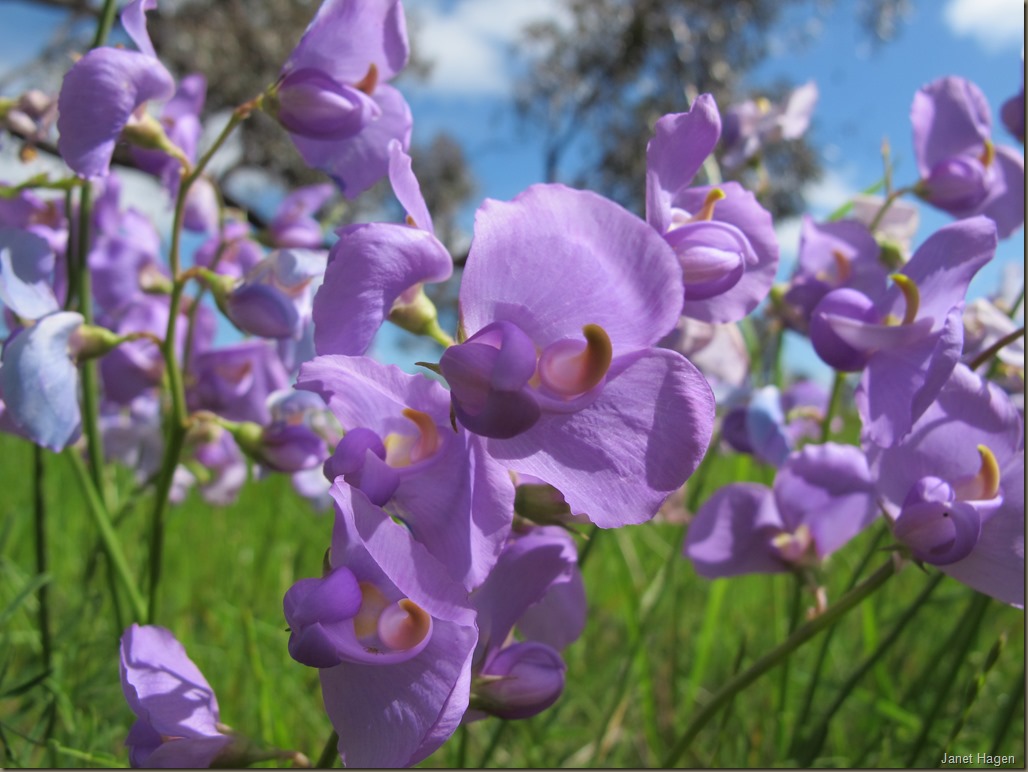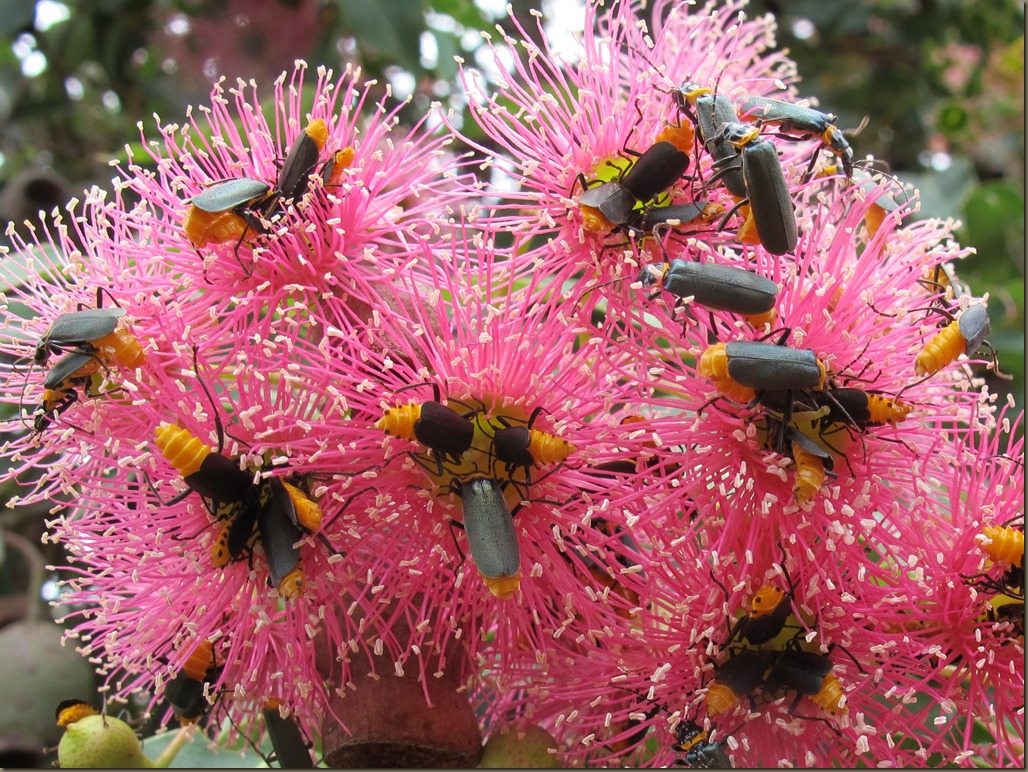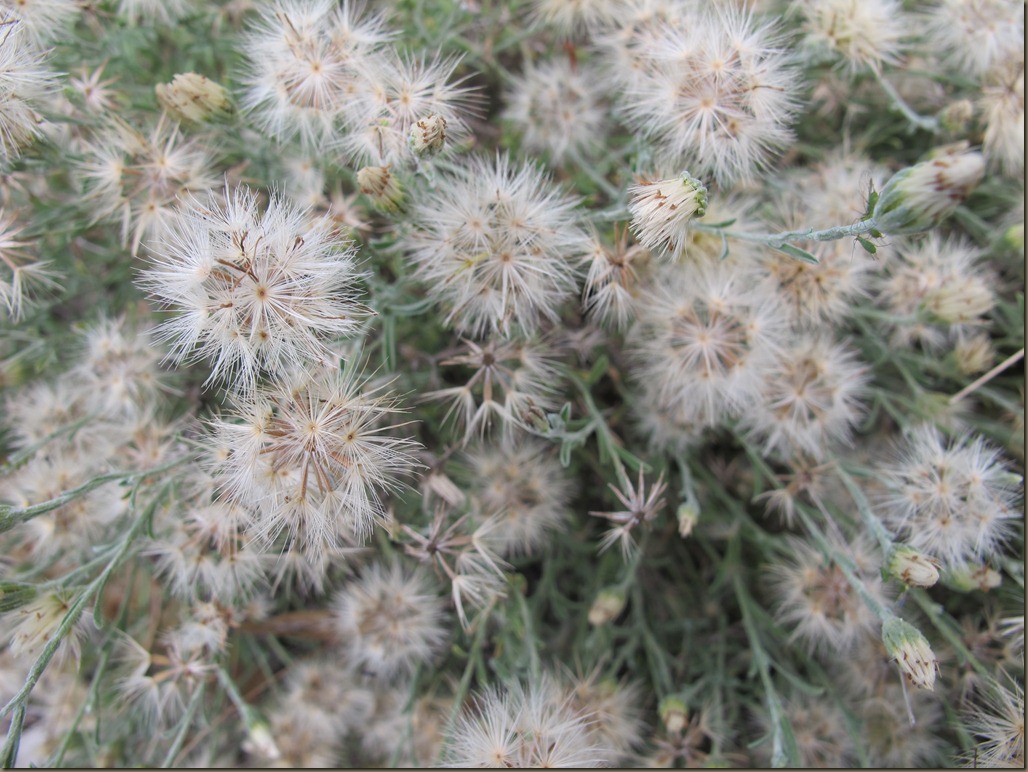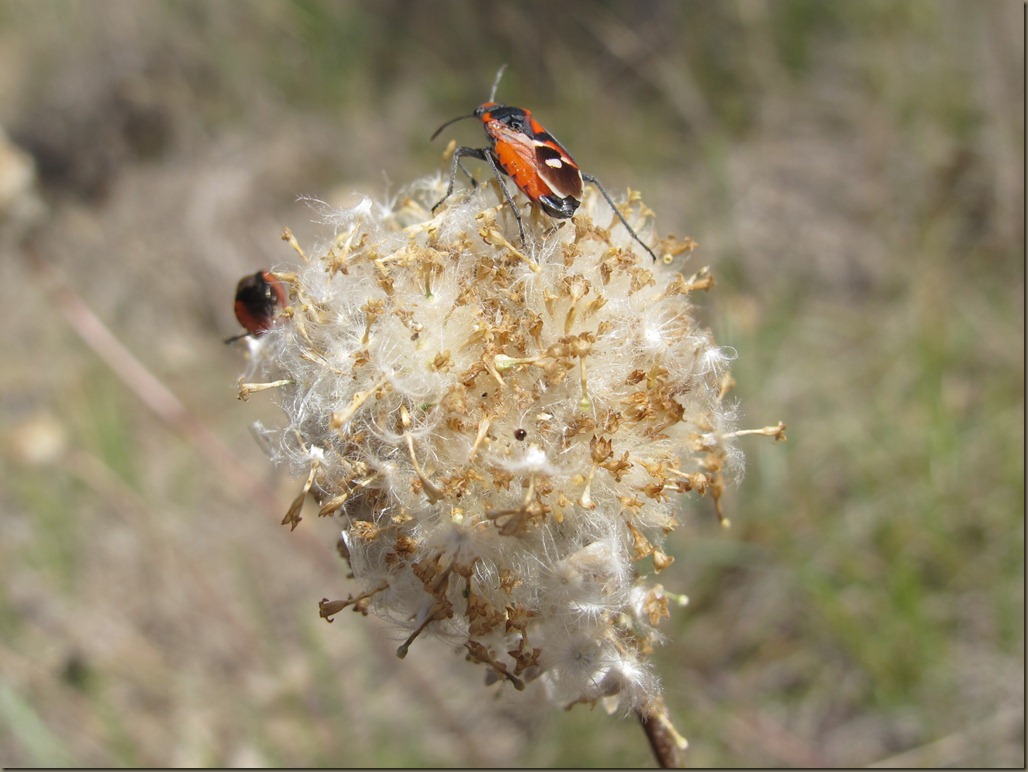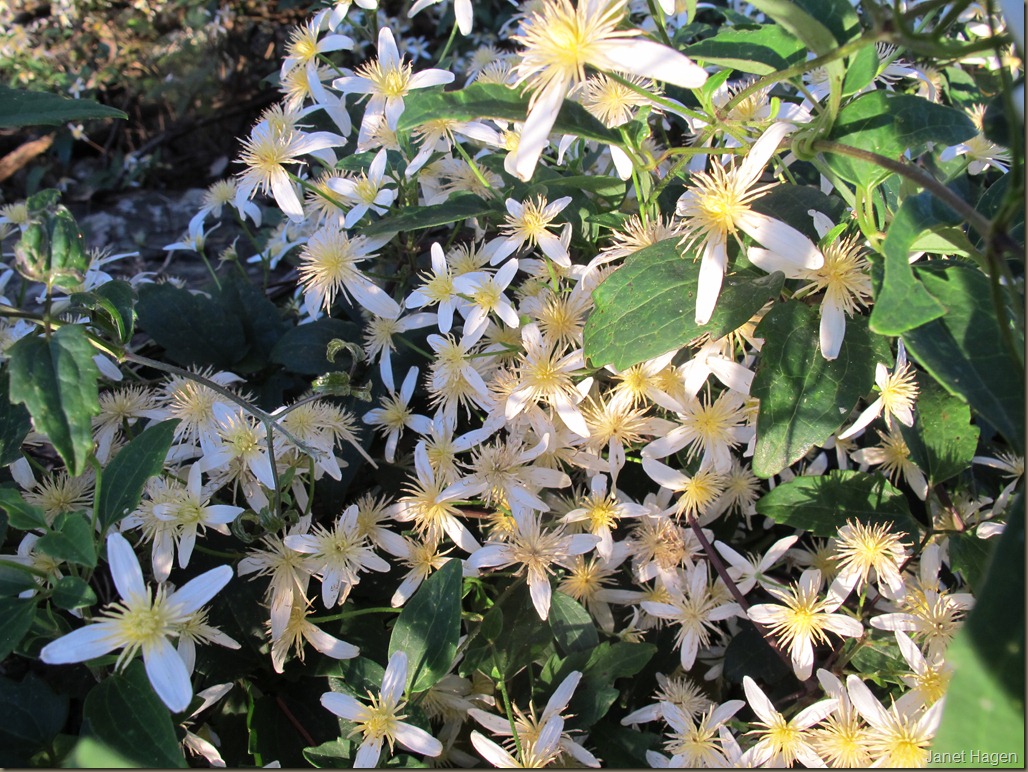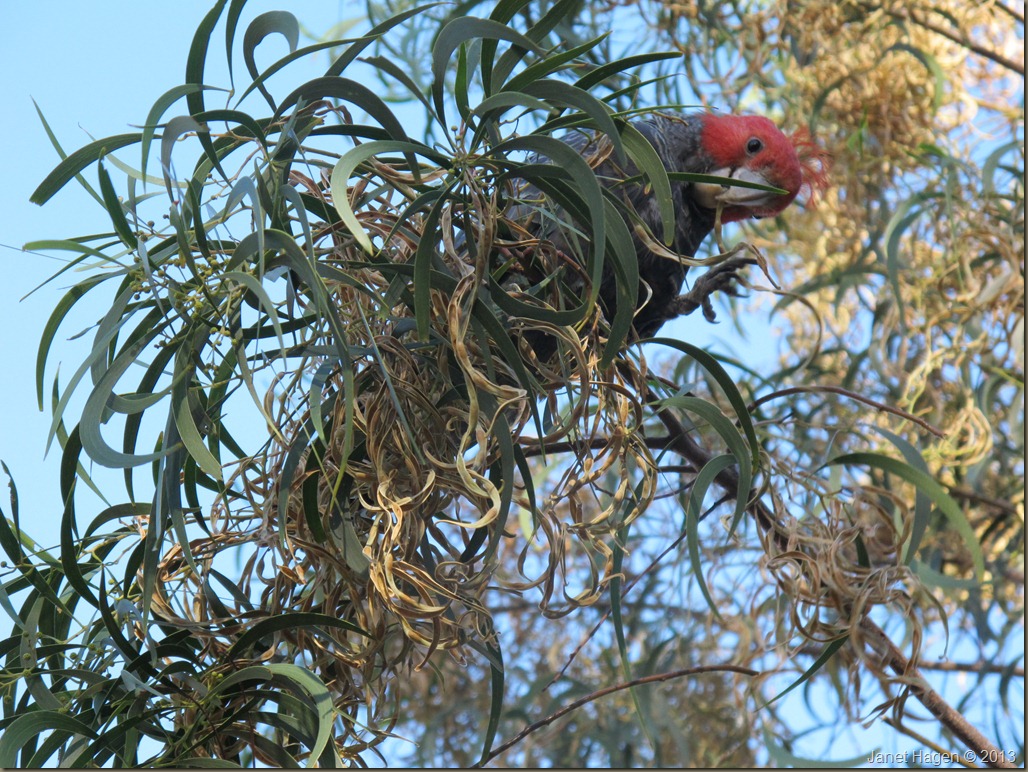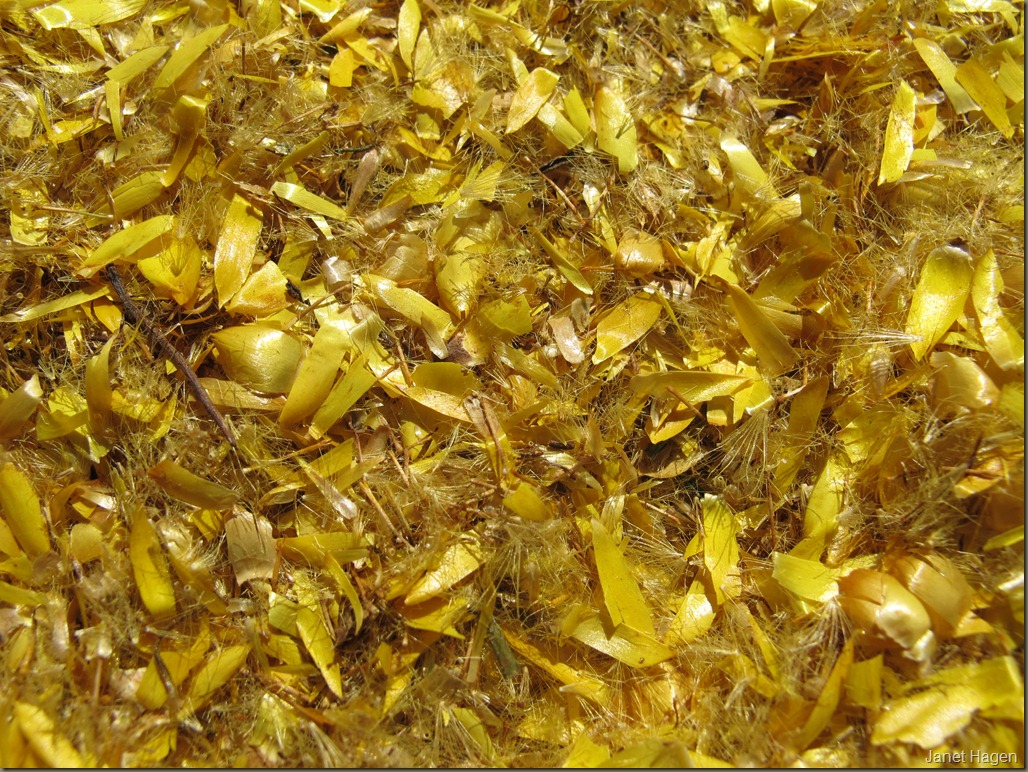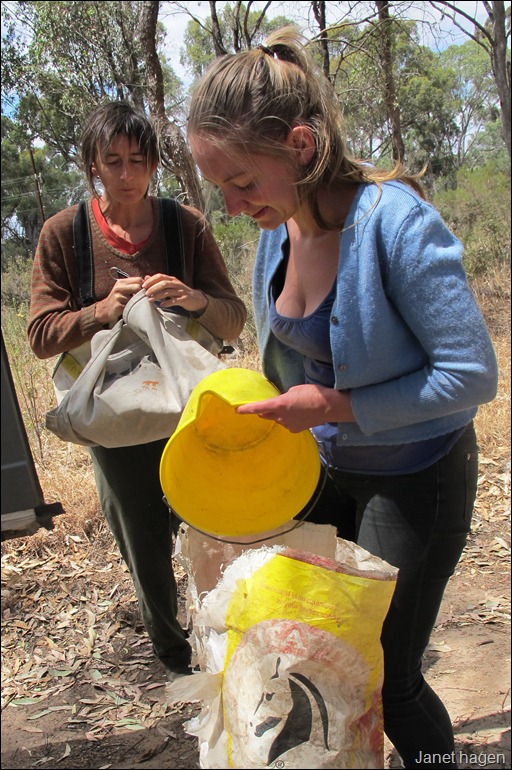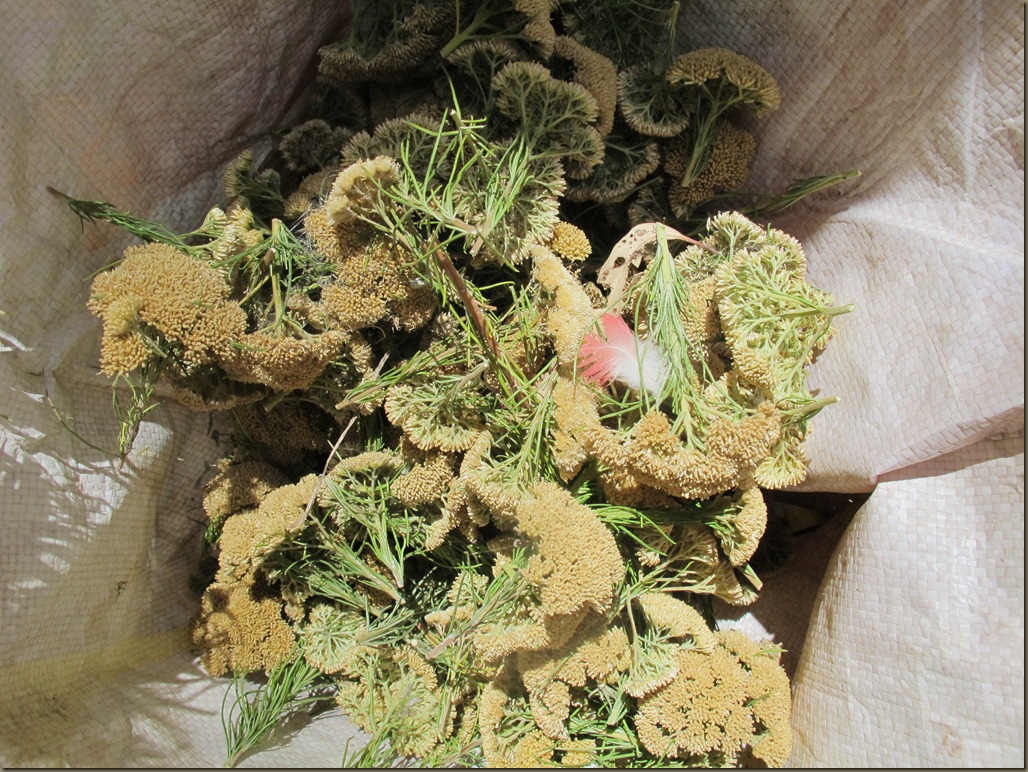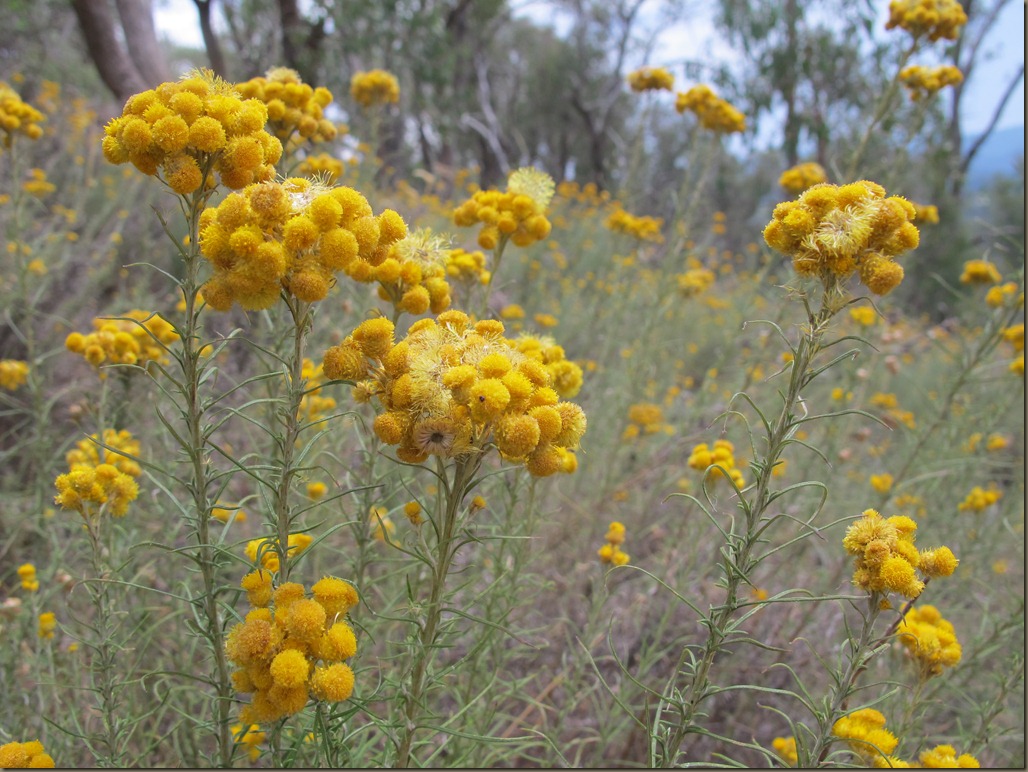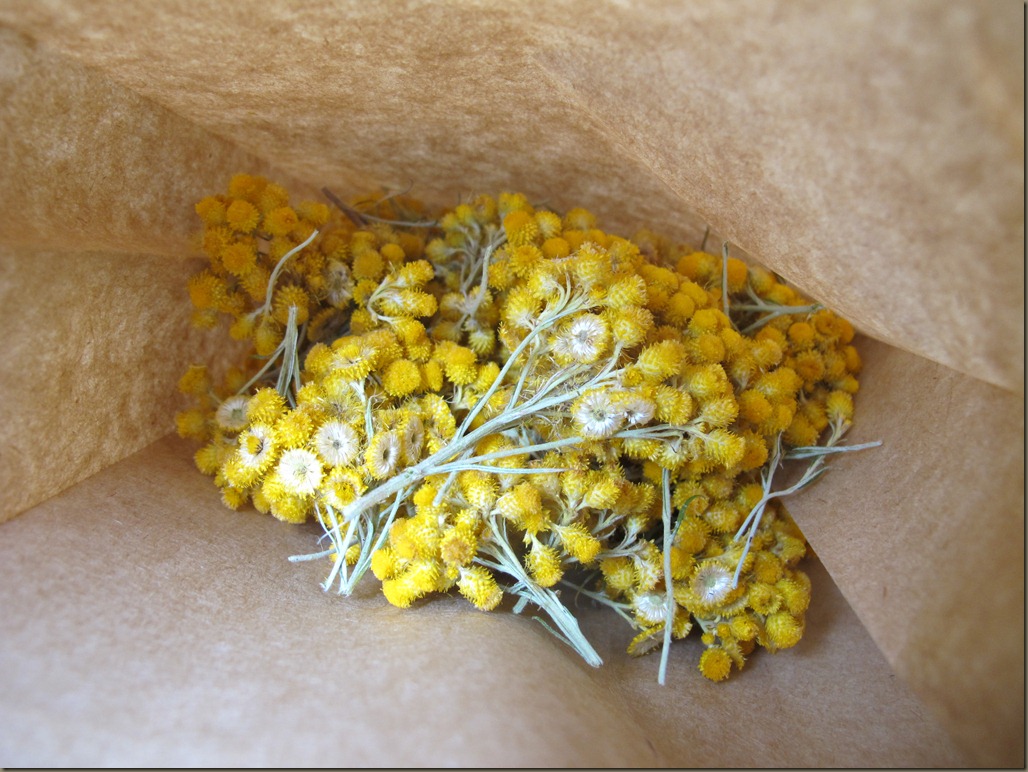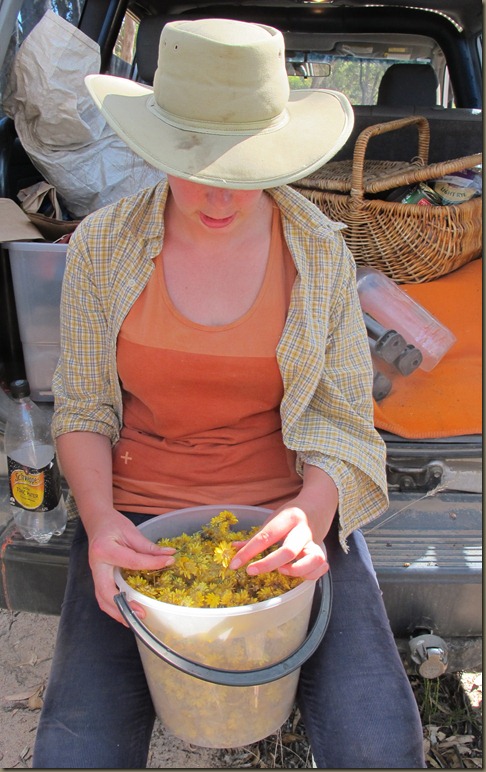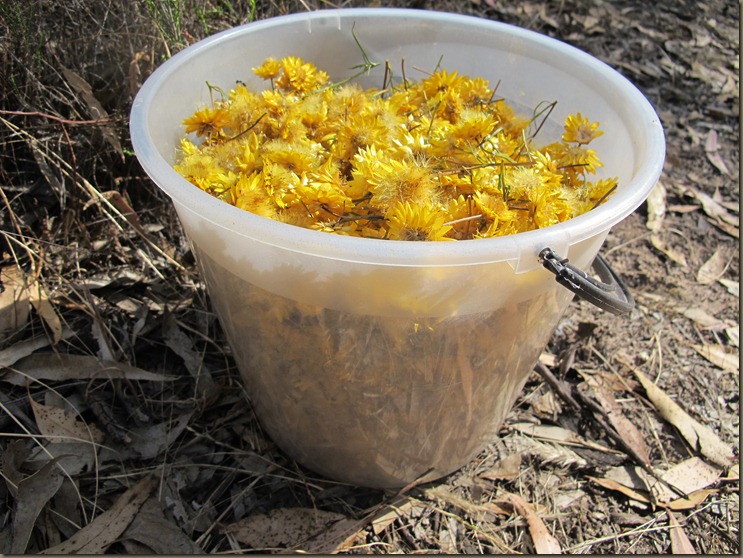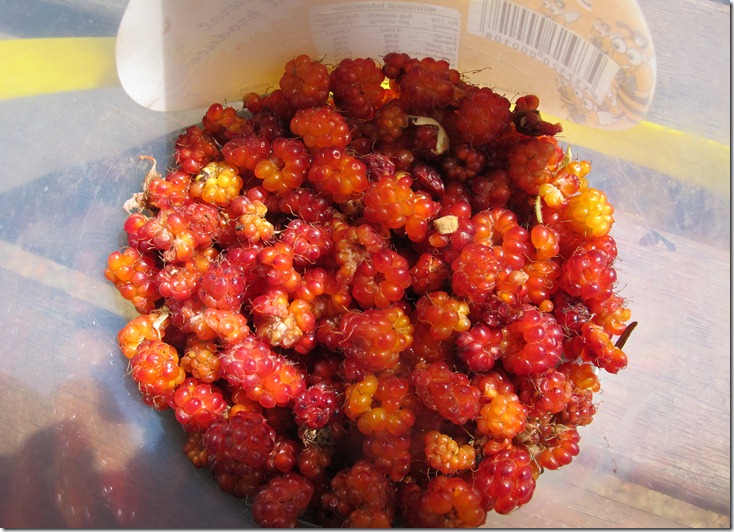Blue Devil Caterpillar
We have discovered five clumps of the unusual spiky metallic blue wildflowers called Blue Devils, Eryngium ovinum, in our paddocks this year.They weren’t there last year or the year before. The clusters of black tubers that send up flower stalks each spring must have survived for years in the ground waiting for favourable conditions. The interesting thing was these delicate caterpillars that appeared to be exclusively grazing on the blue devils. Which moth depends on this plant as a food source?
Greenhood Orchid with a long nose
Sickle Greenhood Orchid was in the Snow Gum Flora Reserve at Ruffy
Brilliant Sun Orchid
Found spectacular orchid today . Unfortunately orchids are very hard to grow from seed.
Swainsonias galore
A blooming field of Broughton Peas at our Wetlandia block. Will I collect any seed this season?
Pollinators at work
Swarms of Soldier Beetles acting as pollination agents. These non- specialized insects raise the level of gene flow between eucalypt populations as pollen is moved during flowering periods.
Very attractive but very prickly , Blue Devil. Eryngium ovinum
These striking metallic blue flower heads were exciting to find .Uncommon in our area. I located 4 populations this year in sites across the Longwood Plains .The very wet winter must have stimulated their growth because I’ve never noticed them before. Blue devils grow in open woodlands on moist clay soils but can tolerate extended dry periods . They appear to associate with Lemon Beauty Heads which are also doing well this year. The prickly seedheads dried out in mid- January but I visited the sites many times before gathering some ripe seed. This seed will be used in new seed production areas.
Clematis aristata Old Mans Beard
An attractive climbing plant of the shelter moist forests within the Strathbogie Ranges .
A important nesting species for small birds and a food source for nectar feeding birds .
The seed heads give it it’s unusual names : Goat’s beard or old man’s beard.
Sow fluffy seed fresh.
Who’s being eating my Lightwood seed ?
We have a plantation of lightwood tree especially grown for seed production . This year they had plenty of seed but the Gang Gang Cockatoos beat me to it!
I love these gentle birds, they’re not afraid when we approach just eat faster and look at us with comical faces , so we shared the seed . We got a bit , they got a lot.
Cottony Haeckeria . A dwarf Shrub that adds richness to mid-layer of dry woodlands.
Collected in early January from along the railway line new Avenel .
This tree-everlasting prefers dappled shade and free draining soils and has curry scented leaves
Attracts heaps of insects and spiders and creates mid- storey structure.
We collected a sack full for our ‘Wetlandia’ Landscape restoration project.
Clustered Everlastings bursting with fresh seed
Chryocephalum semipapposum, Clustered everlasting. We missed collecting most of these everlastings across the Longwood plains. The heat in November ( hottest November day on record) caused the flowers to shed their seeds in the wind early. Fortunately we found a very large population of this species along the ridge tops around Eildon Weir.
Yellow Buttons : Paper bag full of common everlastings
2012 was a great year for everlastings. These come from the railway line reserve at Longwood. Chrysocephalum apiculatum . Collected in early December. The seed needs to be stored for 3 months before sowing. Surface sow and cover very lightly.
Fleshy fruits & succulent leaves .
The delicate ripe berries of the ruby saltbush, Enchylaena tomentosa , need a steady hand to pick. They drop and vanish into the leaf litter very easily . The berries ripen in November. Koories used the leaves as a green vegetable and the sweet berries were eaten. The ruby saltbush occurs occasionally on the Longwood plains but is much commoner in mallee areas. They germinate readily from seeds . Cuttings can also be taken. The plants we collected from were in the Monea North Nature Reserve.
Shiny or Sticky everlasting .
A bucket full of sticky everlasting ( bracteantha viscosa ) collected long the railway line between Avenel and Locksley .
Native Raspberry
Native raspberries picked along the Cerberus River in the Cathedral Ranges. Gathered by Sarah & Janet for seed in hope of establishing them in future bush tucker plots. They were more juicy and orange in colour than any we have seen before.
Red- fruited Saw-sedge
Orange and red mature gahnia sieberiana , Red-fruited Saw Sedge, seed ready for harvesting . The best season in years for seed collection of this species which prefers wet or damp sites in mountain forests. This seed has a dormancy period and needs to be stored for 12 months before sowing . Smoke water aids germination.
Blotched Blue Tongue Lizard
Blue Tougued Lizards defend themselves from predators such as foxes by gaping their mouths wide open , flashing their blue tongues, hissing and puffing out their bodies to make them appear larger that they actually are . This one was about 30cms long and was sunning herself in the long grass as I passed by and jumped at her hiss. (snake season )
This dam on our property was the home for a family of platypus about 10 years ago , since the drought years we have not noticed 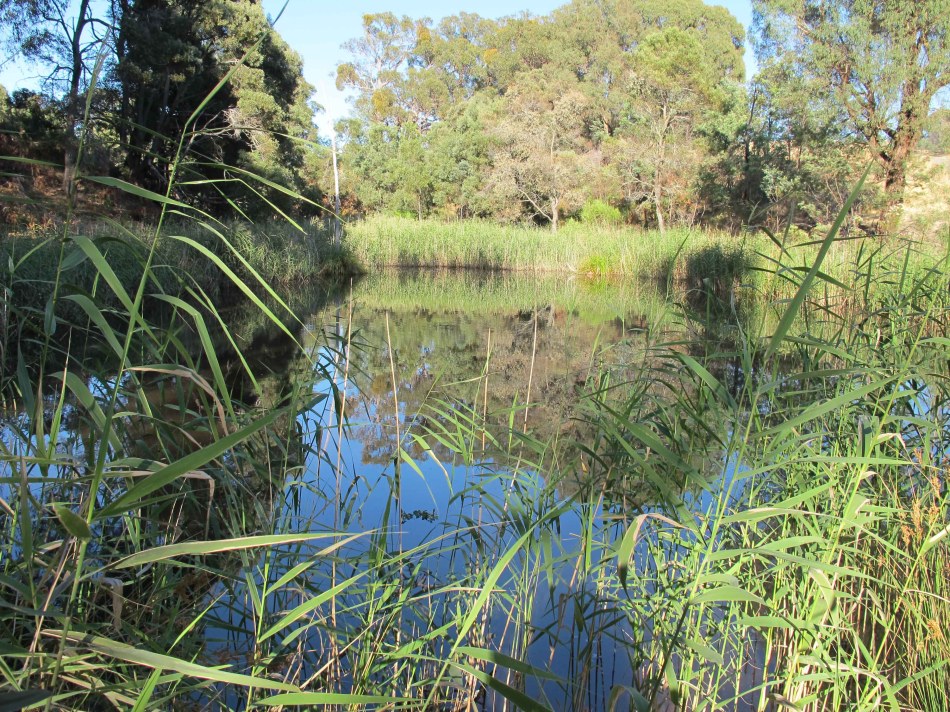 them again but this morning I caught a glimse of a white tailed water rat amongst the rushes.
them again but this morning I caught a glimse of a white tailed water rat amongst the rushes.
Jewel Beetle
Jewel beetles (Buprestidae) This large family includes some of our most attractively-coloured beetles, many with a metallic sheen. Adults tend to feed on nectar, with some preferring leaves, while most larvae feed under bark or bore into wood, stems or roots.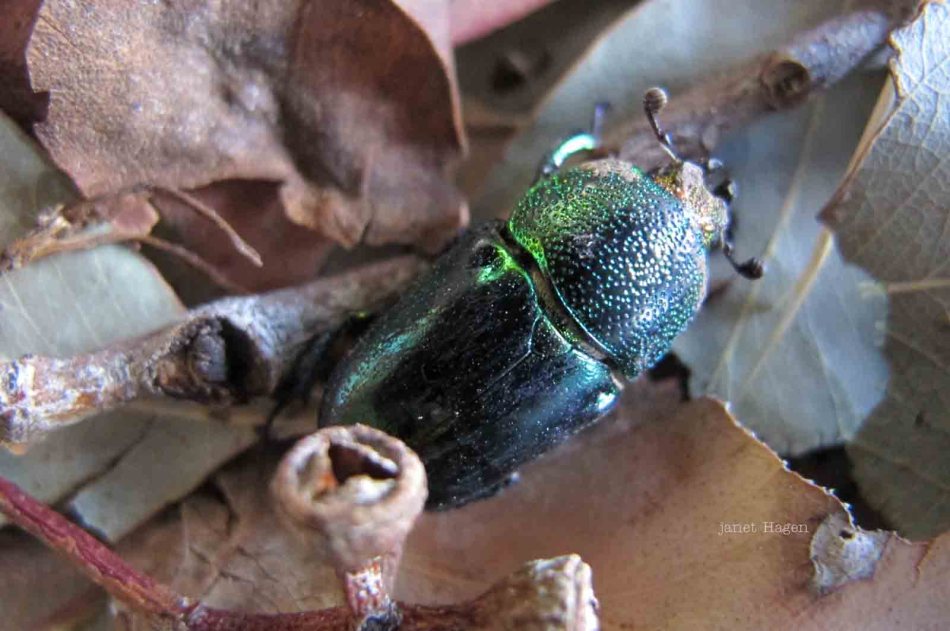
Five Maniacle Cackling Frogs in a Jar
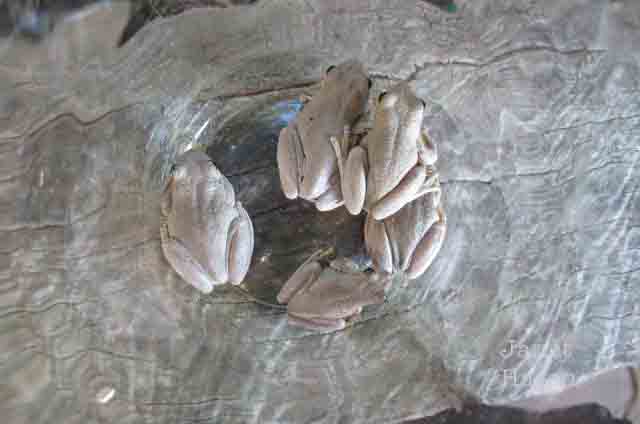 ‘Maniacle Cackling Frog” is another common name of the Perons tree frog, Litoria peroni. The males call in Spring with an increasingly loud “cra-ah-ah-ah-ah-ah-ahk”.
‘Maniacle Cackling Frog” is another common name of the Perons tree frog, Litoria peroni. The males call in Spring with an increasingly loud “cra-ah-ah-ah-ah-ah-ahk”.
These tree frogs like wet and dry environments and when not spawning can be found long distances from water. These were found in an old drum beside our shed. Their skin colour changes to blend in with the surroundings , they were all dark brown in the murky water of the drum but after 5 mins on the table for a photo sessions they have turned white grey .

